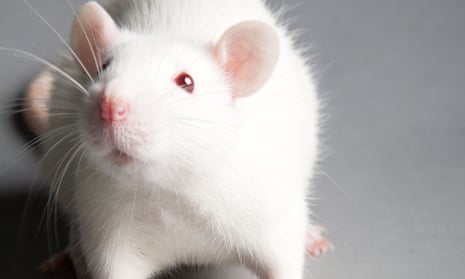Which built brain should our researchers be using? I expect our researchers to be using the best one. Shades of Christine O’Donnell famously insisting that scientists were putting human brains into mice.
Nearly complete human brain grown in US lab: scientist.
Multiregional brain on a chip Jan 2017
Draper Laboratory developing “Brain-on-a-Chip” October 2012
"Alzheimer's-in-a-Dish" Docs Win Top Smithsonian Ingenuity Award Nov. 2015
A patient’s budding cortex — in a dish? June 2015
Cell cultures in petri dishes open new doors to brain research April 2017
Blobs of human brain planted in rats offer new treatment hope
Scientists suggest patient’s own cells could be grown in the lab and used to repair stroke or trauma injuries

Fri 3 Feb 2023 04.57 EST
Last modified on Fri 3 Feb 2023 05.14 ESTBlobs of human brain tissue have been transplanted into the brains of rats in work that could pave the way for new treatments for devastating brain injuries.
The groundbreaking study showed that the “human brain organoids” – sesame seed-sized balls of neurons – were able to integrate into the rat brain, linking up with their blood supplies and communicating with the rat neurons.
The team behind the work suggest that eventually doctors might be able to grow blobs of brain tissue from a patient’s own cells in the lab and use them to repair brain injuries caused by stroke or trauma.
“This is incredibly exciting to me as a physician,” said Isaac Chen, a physician and assistant professor of neurosurgery at the University of Pennsylvania.
The study is the latest in the rapidly growing and ethically complex field of brain organoids. Scientists have shown that when cultivated in the right conditions, neurons begin to form tiny brain-like structures, allowing scientists to investigate developmental conditions such as autism and a wide range of basic neuroscience questions.
The new work is the first demonstration that the lab-grown brain tissue can be successfully implanted into an injury site to repair an adult brain, suggesting there could be future clinical applications.
Chen and colleagues grew human brain organoids in a dish until they were about 1.5mm in diameter. The balls of tissue were then transplanted into the brains of adult rats that had sustained injuries to their visual cortex. Within three months, the grafted organoids had integrated with their host’s brain, hooking up with the blood supply, expanding to several times the initial volume and sending out projections that linked up with the rat’s neurons, according to the study published in Cell Stem Cell.
“We were not expecting to see this degree of functional integration so early,” says Chen. “[This] suggests that neural tissue transplantation in the adult mammalian brain, especially one that has been disrupted with some sort of injury, really is a viable path forward for neural repair.”
The scientists did not assess whether the implants improved how well the rats were able to function, but tests showed that the human neurons fired off electrical signals when the rats were exposed to flashing lights. Chen said that this supported the idea that organoids could act as “blank processing units” that the brain could absorb and use to rebuild itself after injury.
“By rationally introducing these engineered processing units to specific areas of the injured brain, we think that the increased computational capacity of those areas would result in sufficient restoration of brain networks to restore neurological function,” said Chen.
In theory, personalised brain organoids could be created in the lab from a patient’s own cells, although Chen predicted that clinical applications would be at least five to 10 years away. “We are at the very beginning of this journey,” he said.
after newsletter promotion
Dr Serena Barral, a lecturer in developmental neuroscience at UCL, who was not involved in the work, described it as an “incredible” demonstration of the sheer adaptability of neurons. “There’s a lot of information that’s in the DNA itself and that allows the neurons to work wherever they are – whether they’re in a plastic box in the lab or in the brain,” she said.
She added that in future clinical applications, the degree to which the brain could be repaired was likely to depend on which functions had been lost.
“The visual cortex is more simple, but if you think about replacing the areas that are important for speech, mathematical calculations, thinking – that could be a little bit more tricky because there are a lot of abilities of the brain that are grown with experience,” she said.
No comments:
Post a Comment